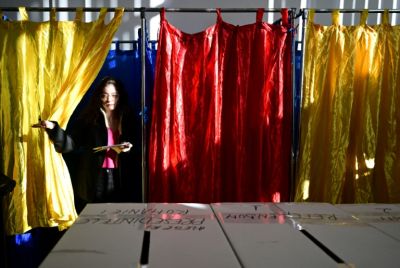Australian Court Finds S&P Liable For Incompetence In Assigning AAA Ratings

The Australian judiciary delivered a crushing defeat to credit-rating agency Standard & Poor's this week that could have global repercussions, when the Federal Court found S&P has misled investors by assigning its top rating to financial products that blew up within months.
In a 1,500-page ruling, the court found S&P and investment bank ABN AMRO, which packaged the securities, had "deceived" and "misled" 12 local government agencies that had purchased them.
"This is a major blow to the ratings agencies, which for years have had the benefit of profiting from the assignment of these ratings without ever being accountable to investors for those opinions," Amanda Banton, the lawyer representing the councils, told Britain's Financial Times. "No longer will ratings agencies be able to hide behind disclaimers to absolve themselves from liability."
The ruling ordered S&P and the Royal Bank of Scotland, which now owns ABN's investment banking arm, to pay the various government plaintiffs nearly $30 million to cover the $17 million lost in their investments, plus legal fees and interest.
"We are disappointed with the court's decision. We reject any suggestion our opinions were inappropriate and we will appeal the Australian ruling, which relates to a specific CPDO rating," S&P said in a statement. RBS said in a statement it was "studying this long and complex judgment."
The unanticipated ruling was a watershed moment that could turn the tide in terms of assigning blame and legal liabilities for some of the worst excesses that led to the global financial crisis of 2008. One commonly discussed cause of that worldwide blowup was the fact that investment banks structured complex financial instruments that were likely -- even designed -- to be worthless over time, then coaxed ratings agencies into giving those "toxic" products high marks.
In some cases, notably for certain derivatives created in the U.S. by Goldman Sachs at the behest of clients who wanted to bet against that market, the banks made profit on the blowup. The ratings agencies shielded themselves behind the excuse that their assessments were just opinions and no substitute for further due diligence on the part of clients purchasing securities.
But Australia's ruling, if it becomes a pattern for outstanding cases in Europe and the U.S., could change that, making those parties liable for losses that followed their actions.
To be sure, there were idiosyncrasies in this ruling that would not apply elsewhere. One point the court focused was on how ABN investment bankers, some of them former S&P employees, "sandbagged" the people from the ratings agency, purposefully withholding important information. There's also the fact that the government entities bought the securities through an intermediary, LGFS, which was also found to have engaged in various breaches of proper fiduciary conduct.
But the meat of the ruling was an indictment of S&P that essentially said the firm should have known better. It noted a "reasonably competent ratings agency" would have declined to make hurried decisions on "grotesquely complicated" products.
Indeed, the court found that in several cases S&P unquestionably used modeling assumptions, provided by the investment bank, that were completely out of whack with reality and did not sync with its previous ratings approach. S&P, the ruling says, had "no rational or reasonable basis for doing so other than the fact that one approach enabled the [securities] to satisfy the AAA rating quantile and the other approach did not."
Legal wonks were going through the mammoth Australian decision Tuesday. But the markets made a summary judgment quickly. Shares of The McGraw-Hill Companies (NYSE:MHP), which own S&P, were down 2.83 percent since the news broke, to $52.91 per share.
© Copyright IBTimes 2024. All rights reserved.





















